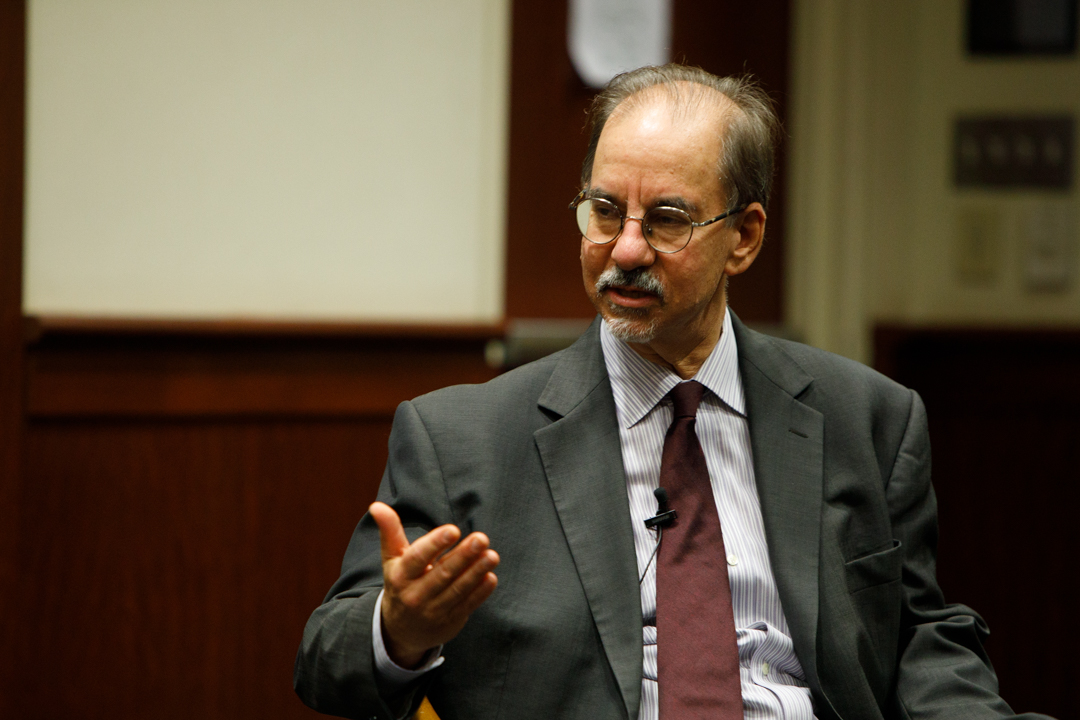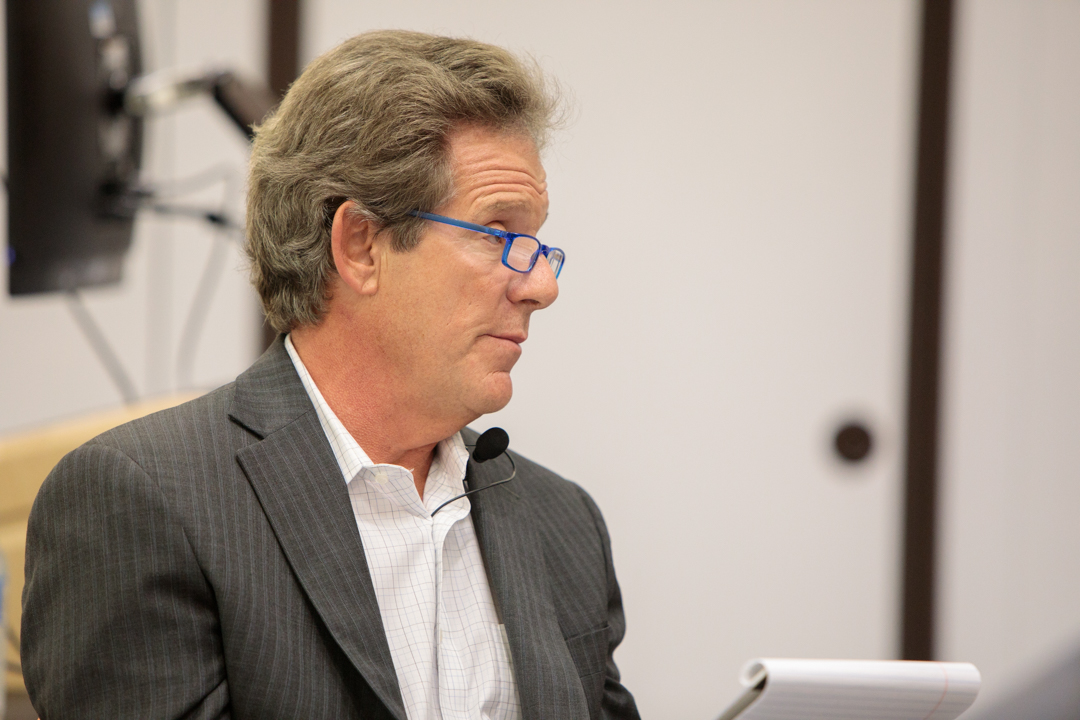By Ruth Steinhardt
Institutions of higher learning in the United States are under attack from both sides of the political aisle. Adam Gamoran, president of the William T. Grant Foundation, proposes a solution: making universities and their research serve the greater good.
That doesn’t just mean social entrepreneurship programs and service learning, which Dr. Gamoran says are important but may also “push the challenge onto the next generation” by chiefly involving students. Serving the greater good also means rewarding faculty members who work toward data-based solutions to contemporary problems
“In fields like medicine and engineering, faculty are rewarded for ‘tech transfer,’ for transferring their ideas from the laboratory into the real world,” Dr. Gamoran said last Thursday at the George Washington University, which he visited as part of a series of guest conversations with Graduate School of Education and Human Development Dean Michael Feuer. “But in the social sciences, policy relevance is not only not rewarded, but often met with disdain…It is time for this to change.”
“One of the main themes of our Graduate School of Education and Human Development, it is indeed the ideal: connecting scholarship and research to the improvement of policy and practice,” Dr. Feuer said.
The idea that universities should be tools for social improvement may seem fairly straightforward, but in fact there are powerful boundaries to institutions of learning making a social impact, Dr. Gamoran said.
One problem is that practical, policy-oriented academic work can be structurally devalued: Faculty lack incentives to take part in it. Work that involves and benefits the community surrounding a university is often categorized as “service,” rather than “research,” for instance, when research, not service, is paramount for academic career advancement.
The problem lies outside of academia, too, Dr. Gamoran said. Policymakers tend to use research not as a tool for determining a path forward, but as a rhetorical weapon to legitimize a decided course.
“Typically by the time research comes into the conversation, it’s tactical,” Dr. Gamoran said. “The policymaker has already decided what he wants to enact, and he seeks out research that supports the decision he’s already made.”
But Dr. Gamoran sees ways to counter these obstacles. Cooperative relationships between schools and policymakers are one way to ensure that academic research is timely, relevant and accessible. In government, entities like the Commission on Evidence-Based Policy demonstrate bipartisan support for the use of data in public policy.
To strengthen those relationships, universities should consider making them easier and more rewarding, Dr. Gamoran said, suggesting steps like teaching releases for time-intensive partnerships and summer salaries for faculty who collaborate with external partners.
The W. T. Grant Foundation’s Institutional Challenge Grant, awarded to universities that implement such policies, is an example of a possible reward structure, Dr. Gamoran said. The first grantee, a team at Cornell University, is studying the link between opioid addiction and child maltreatment in low-income communities in upstate New York and is evaluating specific interventions in the judicial and child welfare systems.
“We have to adopt an approach that’s a two way street,” Dr. Gamoran said. “It’s not about researchers telling policymakers what they found, it’s about a dialogue where researchers are listening to policymakers and practitioners to find out what their needs are and then responding with research.”
Most importantly, universities should reconsider how applied research is rewarded in social science, Dr. Gamoran said. Applied policy-based research can be judged both quantitatively—by mentions in media or governmental deliberations—and qualitatively, by letters from leaders in the policy field in question. That makes it as useful for determining career advancement as any other kind of research, Dr. Gamoran said, and requires only an attitude shift on the part of universities.
“Pursuing positive social impact by harnessing the knowledge and talent of faculty is a key to the future of universities,” Dr. Gamoran said.



